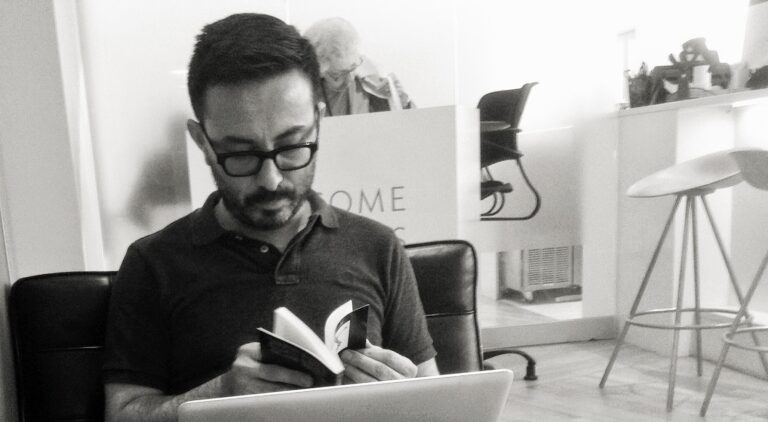A Sound Picture of Place: Baltimore

In the days after the police killing of Tamir Rice, I came across the writing of Stacia Brown (including her essay For Tamir, Who Was Stolen). Her writing on Black motherhood drew in this young reader who rarely clicked on links about motherhood.
Now, Stacia is the creator and producer of the podcast series “Baltimore: The Rise of Charm City.” This series is part of the Association of Independents in Radio (AIR)’s 2015 Localore: Finding America project, produced in partnership with WEAA 88.9. Throughout the spring and summer, Stacia’s masterful storytelling kept me on the treadmill, lengthening my usual 20 minute jogs.
This week, I had the opportunity to speak with Stacia about storytelling through radio.
Patrice Hutton: What was your starting point for telling the story of a city?
Stacia Brown: I initially had a different idea for the series, which was that it would be storytelling about first-time experiences. Personal firsts — like first communion, first kiss, first failure — experienced in the city of Baltimore. I wanted to tell intimate stories with a strong sense of place.
Fortunately, our show was a collaboration between me and WEAA 88.9, a public radio station in Baltimore. After meeting with some of the staff there in a brainstorming session, we decided to instead tell stories of place as remembered by people. I had some fond, personal memories of some iconic locations around the city — like Shake and Bake Family Fun Center and the National Great Blacks in Wax Museum — and those places hadn’t been explored from an intimate, narrative perspective in audio, so we started there. We visited locations, tried to book interviews with their founders or with people who had long institutional memory, and we asked them to share their stories with us.
Patrice Hutton: “The Rise of Charm City” celebrates Baltimore—it’s history and people. Can you talk about the significance of this celebration so soon after the unrest that followed the police killing of Freddie Gray in April 2016? What about the challenges in doing so?
Stacia Brown: I think Baltimore’s sensibility is to celebrate even in times of suffering, to always retain some sense of what’s good here. We saw that during the protest rallies last April, where extemporaneous dance lines and skate parties emerged among the cries from justice. On that way, The Rise of Charm City very much follows in the city’s existing tradition. It is challenging, though, to air shows that are sort of upbeat in tone when something sobering is occurring in town — and that’s near-constant.
Patrice Hutton: How has producing a podcast differed from the other forms of storytelling you’ve worked with?
Stacia Brown: It’s more of a longterm investment. When I’m writing for new media, it doesn’t often take long or span a two- or three-week period to produce one essay. One episode of this half-hour show is easily a 30-40-hour investment of time and labor, from field interviews to transcription, to script-writing, to narration-recording and sound editing and design.
But writing for the ear is also different. I have to be mindful of description. Getting someone to describe where we are in a field interview or taking notes on how things appear so that I can paint a sound-picture of place is important. Figuring out which ambient sound might flesh out a scene is a different — and quite fun -/ feature of podcasting. Sound can add several layers to written narrative.
Patrice Hutton: Tell me more about “paint[ing] a sound-picture of place.” Could you walk me through your process for Episode 4: Don’t Start Nuns, Won’t Be None?
Stacia Brown: The idea behind painting a sound picture is that a listener should be able to close her eyes and vividly imagine at least 3 sensory experiences of any location we’re featuring. She should hear the noise of a skating rink or practically smell the crabcakes at a food truck. She should envision the size of a crowd. And that should all be based on description and found sound — sound collected at the site itself or gathered to enhance the image we’re creating of that site.
Don’t Start Nuns, Won’t Be None is the first episode where I had no familiarity with the subject matter beforehand. First 3 eps, I knew the places, to some degree. I never knew Baltimore was home to the oldest order of black nuns in the world. So my starting point was just learning why that would be so significant. Why was a black sisterhood founded? Then: how has it survived for over a century in Baltimore City? We found out while learning the answers to those questions that St. Frances Academy, their private school, has played an integral part in the sisterhood’s longevity. So we had to explore the school in tandem with the sisterhood. When I’m writing episode scripts, I try to build a little of that discovery process into the tone or the narration. I want people to feel like we’re learning together, not that they’re being lectured or instructed.
Patrice Hutton: While we eagerly await the second season of “The Rise of Charm City” could you recommend your readers (and listeners!) podcasts that influenced or inspired you?
Stacia Brown: The only shows I knew I wanted The Rise of Charm City to be like were Shannon Cason’s Homemade Stories and This American Life/Snap Judgment. Cason always sounds so comfortable and conversational. He doesn’t have a “radio voice”; he’s just talking to us. I still strive for that tone. Glynn Washington opens every Snap Judgment with a little tone-setting monologue. I do that with RoCC. And I just love the storytelling and the field work and the investigation involved in TAL and Snap Judgment. Other podcasts I’d recommend: NPR’s Invisibilia, Radiolab, Millennial, and Modern Love the Podcast.
Read more of Stacia’s writing.


